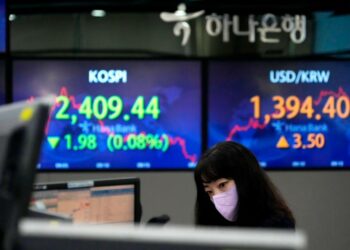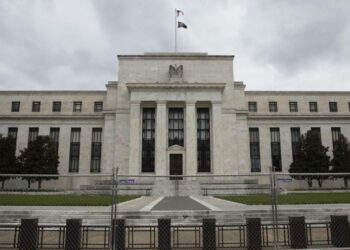If Party City’s results this week are anything to go by, then it might be time for high-yield bond investors to call a cab.
Despite being the riskiest part of the mountain of debt that has been raised in recent years, high-yield, or “junk”, bonds have held up well in the face of unrelenting equity volatility, tighter monetary policy from the US Federal Reserve, rising inflation, disrupted supply chains and war in Europe. That is, until recently.
Party City kicked off a week of disappointing earnings results that helped the junk bond market spring from its slumber. The company came under pressure in the first quarter from constrained helium supply and soaring prices just as demand is escalating ahead of the US graduation season.
Helium is a large input cost for Party City, and contributed to the company’s previous struggles before the pandemic. Chief executive Bradley Morgan Weston said on its earnings call that it had managed to source enough helium to satisfy its clients’ demands but at an unexpected knock to earnings of $2mn. Alongside rising freight and port fees, the additional helium cost helped drag earnings negative.
Balloons don’t defy gravity on their own, and after the disappointing results, neither did Party City’s bonds. The company’s $750mn bond sold just a year ago and maturing in 2026 deflated to just above 70 cents on the dollar from north of 90 cents at the end of April.
The bonds were not alone to suffer, as investors reassessed the ability of high-yield issuers to withstand the strained economic outlook.
Up until the end of April, a broad index of high-yield bonds run by Ice Data Service had lost 8 per cent for the year. But investors still felt relatively confident about credit risk, the likelihood that a company might not pay you back. The index fall was almost entirely driven by the rapid rise in interest rates.
Notably, the index losses compared with a fall in the Nasdaq which reached 30 per cent this week for the year to date. That chimes with past cycles. Bond losses are typically less than those seen in equity markets when conditions turn tricky because they sit higher up in a company’s capital structure, more insulated in bankruptcy.
And investor confidence on credit risk was shown in the difference between corporate bond yields and equivalent US Treasuries, a spread that effectively strips out the move in interest rates represented by sovereign bonds and gives a clearer indication of investors’ view of the health of lower-rated companies. High-yield bond spreads started the year at 3.10 per cent, inching higher early in the year before rallying back in March and sitting at 3.5 per cent on April 21.
However, since then, spreads have started to rise, ending April at 3.97 per cent. In the nine trading days that have followed, spreads have risen by a further 0.5 percentage points, outpacing the sell-off for the entire earlier part of the year.
The move has been particularly stark for the lowest quality bonds rated triple C, right at the bottom of a ratings ladder that starts at triple A and crosses into high-yield below triple B and into double B ratings.
Returns on this segment of the market had outperformed higher rated debt earlier this year because the solid economic outlook helped support the idea that their overall health would improve over time, reducing spreads and counteracting the rise in interest rates.
This month though, triple C returns have fallen below the broader market, in a clear indication that nervousness over interest rate risk is beginning to morph into nervousness over credit risk.
“It’s been a rough, rough market,” said Matt Eagan, a portfolio manager at Loomis Sayles in Boston. “There’s really no place to hide. It’s a turning point in terms of the nature of the credit sell-off.”
Speaking to bond fund managers this week — including Eagen — it’s clear this is not yet a breaking point. Confidence in the high-yield market to withstand further headwinds remains, albeit less unabashed. As one bond trader said midweek, this feels like a buying opportunity. They just want someone else to start buying first.
The Ice Data Service High Yield index stands at 7.5 per cent, a level it has only breached on four other occasions in the past decade, most recently in the worst of the pandemic induced sell-off and before that during the energy crisis in 2015 and growth scares that emerged in 2018.
“My base case at the end of the first quarter was that the Fed would be able to execute a soft landing,” said Jeremy Burton at PineBridge. “That’s still my base case but the bear case is increasing in probability.”
joe.rennison@ft.com











